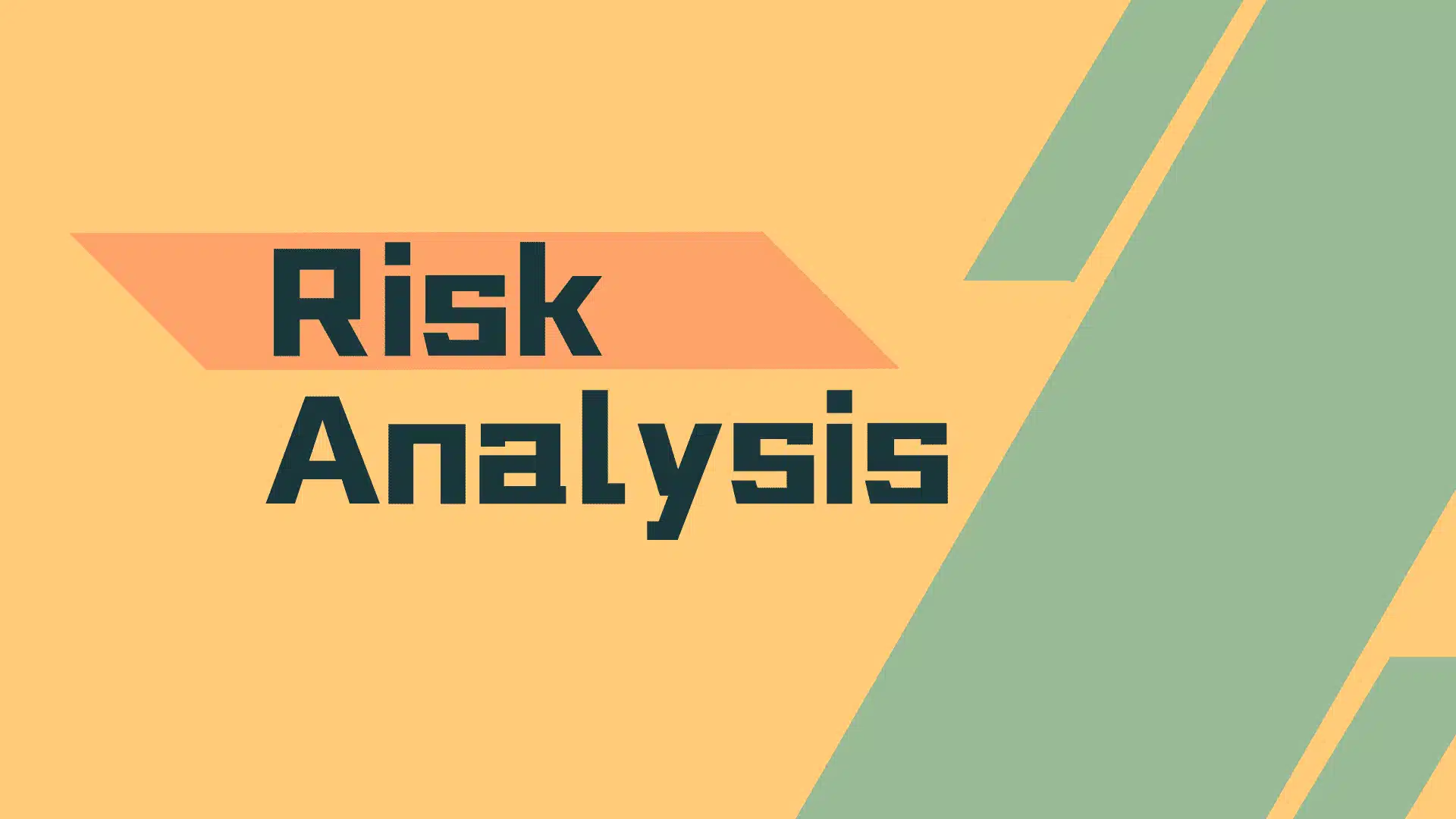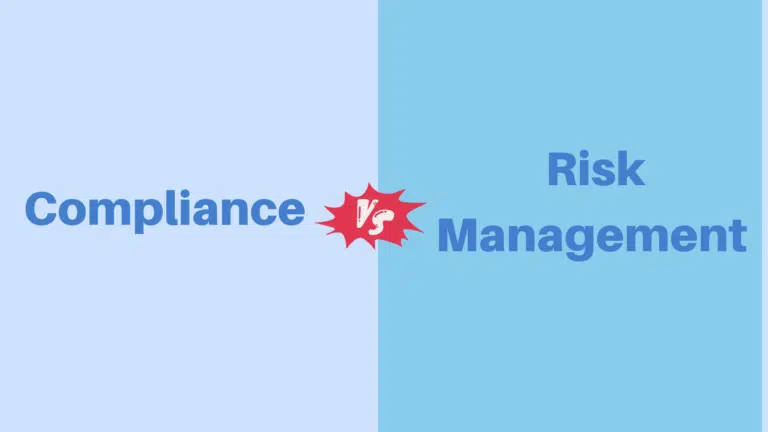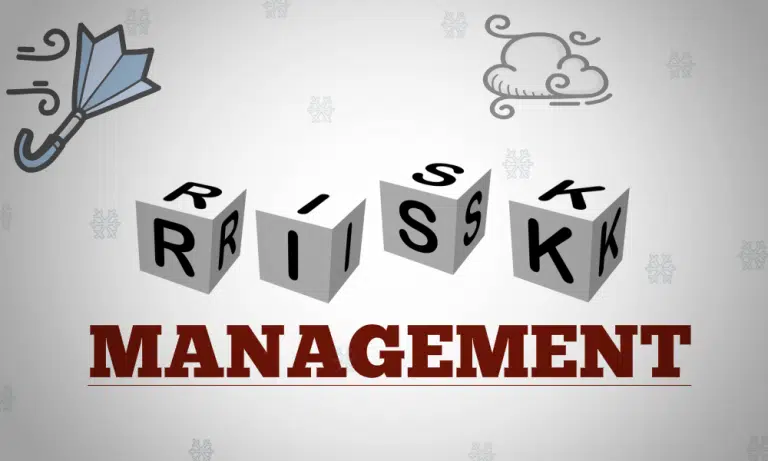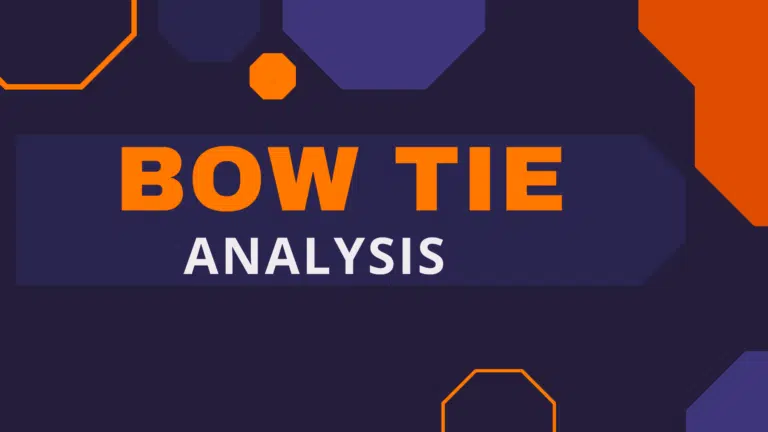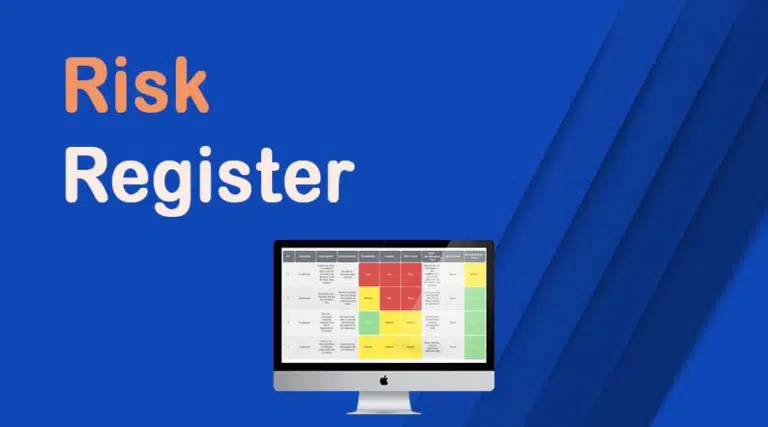Risk analysis in project management helps analyze risks and uncertainties that might impact the project objectives.
This is carried out in the early stage of project planning, with the primary goal of stopping risks from becoming issues.
This post will examine risk analysis, its types, and its benefits.
What is Risk Analysis?
Definition: Risk Analysis evaluates and prioritizes risks so you can develop a response plan to reduce the impact or probability of negative risks and increase the impact of positive risks.
Risk factors include financial unpredictability, legal responsibility, technology difficulties, strategic management blunders, accidents, and natural disasters.
Risk analysis is a part of the risk management plan.
A risk management plan includes identifying risks, analyzing risks, developing a response plan, and monitoring and controlling the risk throughout the project life cycle.
Risk management reduces surprises during the business operation of project progression. While predicting the future with certainty is impossible, you can predict risks and reduce their likelihood or impact using risk management techniques.
A risk analysis is a key process in risk management, and you must determine the risk attitude of an organization to proceed with the risk analysis process.
Types of Risk Analysis
Risk analysis can be of the following two types:
- Qualitative Risk Analysis
- Quantitative Risk Analysis
#1. Qualitative Risk Analysis
The qualitative risk analysis process prioritizes individual risks for further analysis by assessing their probability of occurrence, impact, and other characteristics. This process focuses efforts on high-priority risks.
Qualitative risk analysis is a continuous process, and you perform it when you identify new risks.
The key tools for this process are expert judgment, interviews, meetings, brainstorming sessions, risk probability and impact assessment, risk categorization, probability impact matrix, etc.
The output of this process includes risk register update, issue log, assumption log, risk report, etc.
#2. Quantitative Risk Analysis
The foundation of quantitative risk analysis is qualitative risk analysis.
The quantitative risk analysis process numerically analyzes the combined effect of identified individual risks on project objectives. This process quantifies overall project risk exposure and provides additional information to help plan risk responses.
The simple and low-cost project does not require this process. We use quantitative risk analysis processes in large and complex projects. Like the qualitative risk analysis process, the quantitative risk analysis process is continuous and performed when you identify new risks.
Key tools of this process are expert judgment, simulation technique (e.g., Monte Carlo simulation), sensitive analysis, decision tree analysis, influence diagram, tornado diagram, spider diagram, etc.
The output of this process is a risk register update and risk report.
When to Use Risk Analysis
You must use risk analysis in all projects and any other business operations; for example:
- To mitigate the project risks.
- To decide whether to proceed with a project or not.
- To address risks at work and enhance safety.
- To deal with technology or equipment failure, theft, employee illness, or natural catastrophes.
- While preparing for environmental changes, such as new market rivals or shifts in governmental regulations.
How to Use Risk Analysis
Step-1: Plan Risk Management
This is the first process in risk management. Here, you define how you will conduct risk management activities on your project.
The key tools for this process are expert judgment, data analysis, and meetings.
The output of this process is a risk management plan.
Step-2: Identify Risks
Risk analysis is a part of risk planning, and you perform risk analysis after identifying the risks.
You identify project risks and their source and record them in a risk register.
This is a continuous process; you will record risks in the risk register whenever you identify new ones.
Key tools for this process are expert judgment, data gathering techniques, data analysis techniques (root cause analysis, assumption, and constraints analysis, SWOT analysis), meetings, interviews, brainstorming, etc.
The key output of this process is the risk register. At this stage, the risk register will include a list of identified risks.
Step-3: Analyze Risks
Risk analysis includes qualitative and quantitative risk analysis.
For most small projects, qualitative risk analysis is sufficient. This process prioritizes individual risk so you can focus on high-ranking risks. You can keep lower-ranking risks on a watch list for monitoring.
The following tools are helpful in this process:
- Expert judgment
- Interviews
- Meetings
- Brainstorming sessions
- Risk probability and impact assessment
- Risk categorization
- Probability impact matrix
- Etc.
You will use a quantitative risk analysis process if the project is large and complex. This analysis examines the impact of all risks together. Note that, in qualitative, you analyze individual risk, while here, you analyze risks at the project level.
You can use the following tools for the quantitative risk analysis process:
- Expert judgment
- Simulation technique (e.g., Monte Carlo simulation),
- Sensitive analysis (influence diagram, tornado diagram, spider diagram)
- Decision tree analysis
- Etc.
The output of these processes is a stakeholder register update which includes a prioritized list of risks and results of quantitative risk analysis techniques.
Step-4: Develop Risk Response
In this process, you develop strategies to manage risks and agree on a course of action. Here you decide how to treat each risk.
You assign resources to modify activities as required to manage risk. You allocate a risk owner and an action owner.
The following are negative risk response strategies:
- Accept: Here, you do not take any proactive actions. This risk response strategy is useful for low-level risk or when it is not cost-effective to address the threat.
- Mitigate: In risk mitigation, you take actions to reduce the probability and/or impact of risk.
- Escalate: When a threat is outside the project scope or the risk response exceeds the project manager’s authority, you can escalate it to a higher level, e.g., program level or portfolio level.
- Avoid: In avoid strategy, you act to eliminate the threat and protect the project from its impact. You use this strategy for high-level negative risks. Avoidance may require changing in plan or scope.
- Transfer: In the transfer strategy, you shift the risk ownership to a third party. Now, this third party will manage and bear the impact of the risk if it occurs.
The followings are the positive risk response strategies:
- Accept: Here, you do not take action to realize the opportunity. This risk response strategy is useful for low-level risk or when it is not cost-effective to address the threat.
- Escalate: When managing an opportunity that is outside the project scope or above the project manager’s authority, you will transfer the responsibility to manage the risk to the upper level. This upper level can be program, portfolio, or PMO levels.
- Share: If you cannot realize the opportunity alone, you partner with a third party can realize the opportunity jointly.
- Enhance: This strategy increases the chance or impact of the opportunity.
- Exploit: This strategy ensures that you realize the opportunity.
Step-5: Implement Risk Responses
In this process, you implement the risk response plans. The risk owner or action owner will ensure they implement the risk responses when an identified risk occurs.
After implementing the risk response plan, they update the plan’s effectiveness in the risk register.
The key tools for this process are expert judgment and a project management information system.
The main outputs of this process are project document updates and change requests.
Step-6: Monitor and Control Risks
This process ensures the implementation of agreed-upon risk response plans. It tracks, identifies risks, and evaluates the effectiveness of response plans.
The key tools for this process are data analysis, audit, meeting, and reserve analysis.
The main outputs of this process are project document updates, change requests, organizational process asset updates, etc.
Methods of Risk Analysis
You can use various techniques in risk analysis. Some risk analysis methods are as follows:
- Bow Tie Evaluation: This qualitative risk analysis technique helps identify project risks with their source and impact. Project managers must first identify risks that might impact the project before considering their origins, results, and a risk mitigation approach. It is a versatile technique that you can apply in any sector.
- Risk Analysis Matrix: The risk analysis matrix ranks risks according to their likelihood and severity. Its objective is to assist managers in categorizing risks and developing a management strategy to minimize the threats’ impact or probability. It is a qualitative risk analysis technique.
- Risk Register: A risk register is a vital project management tool. This project document includes all potential risks arising during the execution phase and essential details. It is a component of the risk management strategy, which outlines who manages the risks, how to mitigate them, and what resources are required.
- SWIFT Evaluation: Structured What If Technique is known as SWIFT. It is a risk analysis technique that identifies possible risks related to the project plan modifications. Team members must think of as many “what if” scenarios as possible to identify all risks.
- Monte Carlo Simulation: Monte Carlo Simulation is a mathematical technique used to estimate the possible outcomes of an uncertain event. It predicts outcomes based on an estimated range of values versus fixed input values. This is a quantitative risk analysis technique.
- Sensitivity Analysis: Sensitivity Analysis measures how the impact of uncertainties of one or more input variables affects the output variables. This analysis helps improve the prediction of the model. This is a quantitative risk analysis technique.
Risk Analysis Templates
The following images show an example of a risk analysis template. You can use the template below (download by clicking here) for your project risk analysis.

The guidelines for using the above risk analysis template are as follows:
Risk Severity: This indicates the seriousness of the risk. It can either be acceptable, tolerable, intolerable, or undesirable.
Tolerable means the effects of the risk will be felt on the outcome, while intolerable means the risk could lead to disaster. Acceptable means the risk has little or no effect on the outcome, while undesirable means the risk seriously affects the project objective.
Risk Likelihood: This is the probability of a risk happening. It can either be possible, probable, or improbable.
Probable means the risk will happen, while improbable indicates that the risk is unlikely to occur. Possible means the chances of the risk occurring are high.
Risk Analysis Examples
The following are examples of risk analysis for manufacturing, transportation & logistics, and construction industries.
#1. Construction Risk Analysis Example
An organization received a project proposal to construct luxury flats. Although the project might result in positive brand recognition for the business, the owner is apprehensive about accepting the deal because her company focuses on affordable housing.
It would be a risk to take on this endeavor and a challenge. Therefore, together with her team, she does a risk-benefit analysis before making a final choice to determine whether the advantages of pursuing this project exceed the perils.
Finally, she decided to take on the project.
#2. Transport & Logistics Risk Analysis Example
The director of international logistics firm worries about an approaching storm’s impact on business operations. He thinks the business should set up a fund to deal with storm recovery.
However, his coworker has a different viewpoint. She asserts the impact of the storm will be insignificant. So, the director does a business impact study and delivers the findings at the board meetings to persuade her coworker and other directors.
#3. Manufacturing Risk Analysis Example
The new supervisor is responsible for increasing production due to increased orders.
She conducts a brief needs assessment by asking the employees to complete a survey to gain insight into what they need to do to increase production successfully.
Benefits of Risk Analysis
- Increase the Chance of Success: A risk analysis helps prioritize risk, which increases the effectiveness of risk management. As a result, the project will face fewer issues, and the chances of success will increase.
- Accurate Cost Estimation: Risk analysis makes it possible to calculate a contingency budget rather than imposing a typical contingency “cost.” The accuracy of the budget will improve if risk information is accessible.
- Clear Expectations: Risk analysis sets the expectations straight. Stakeholders know the chances of project success and prepare for all eventualities.
- Better Returns on Investment: A sound risk analysis translates to better risk management and helps complete the project within the budget. It allows stakeholders to have the best return on investment. However, ignoring risk analysis can affect the project objective causing a loss of revenue.
- Improved Decision-Making: Risk analysis provides data and information related to the consequences of decision-making, and project managers can make better-informed decisions. Ensure the risk data quality is high, free from errors and bias for efficient decision-making.
Conclusion
Risk analysis is a part of risk management planning and evaluates risk qualitatively and quantitatively. Small projects require only qualitative risk analysis, while large projects require both processes. Risk analysis includes the evaluation of positive and negative risks. This process helps businesses assess risks and aid in decision-making.

I am Mohammad Fahad Usmani, B.E. PMP, PMI-RMP. I have been blogging on project management topics since 2011. To date, thousands of professionals have passed the PMP exam using my resources.

